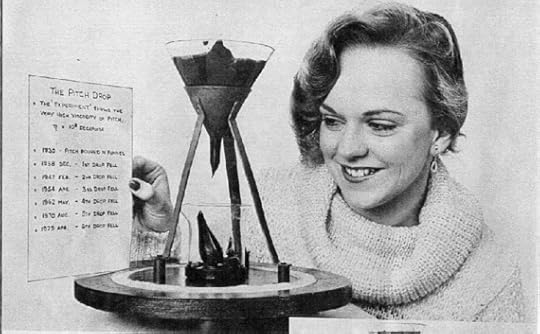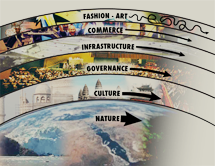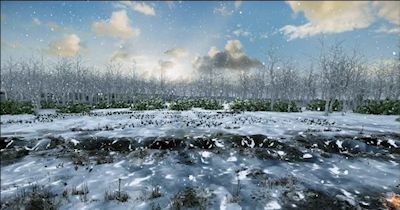Stewart Brand's Blog, page 68
July 31, 2013
Leap Seconds and the Nature of Civil Time
About two months ago, a group of scholars gathered in Charlottesville, Virginia, to discuss the future of civil time – the universal clock that keeps the entire globe and its nearly 7 billion human inhabitants in sync. Their conversation had begun with a meeting in 02011 (at which Long Now co-founder and Board member Danny Hillis presented a paper on timekeeping in the 10,000-Year Clock); this year, the debate focused on the merit of the leap second: the corrective increment of time that is added to (or subtracted from) the end of a winter’s or summer’s day roughly once every eighteen months in order to synchronize the world’s clocks with the small but erratic changes in the speed of Earth’s rotation.
At stake in this debate is a question about how we wish to define civil time – or Coordinate Universal Time (UTC), as it is officially known. Now based on atomic timekeeping systems, eliminating the leap second would effectively mean decoupling UTC entirely from the movement of Earth, Moon, and Sun. In a recent article published in Aeon magazine, conference attendee and science writer Dava Sobel took the opportunity to explore some of the deeper questions this possibility raises about the very nature of timekeeping, and of time itself.
Until quite recently in human history, time was governed by the astronomical cycles of Earth’s orbit and rotation. We scheduled our daily activities around the moving shadows on a sundial, and planned our year in accordance with the seasonal lengthening and shortening of days. Time was indelibly bound to our precise physical location, yet simultaneously defined by rhythms much larger than ourselves.
But with the emergence of global commerce and communication came the need for standardization: we had to take control of time, and submit its rhythms to our need for disciplined coordination. First came the adoption of Greenwich Mean Time as the basis for timekeeping across the globe; then came the realization that the behavior of tiny particles – atoms – could offer a much more precise measurement for time than the movement of large celestial bodies. Sobel writes:
A second of time has its roots in the sexagesimal numerology of the ancient Sumerians, but it was too fleeting an interval to be registered on a mechanical clock until the 16th century. By 1960, a single second could be subdivided into slivereens by an atomic clock. The regularity of atomic-frequency timepieces promised a far more reliable standard than the spinning or revolving of the wobbly old Earth, and forced authorities to rethink their concept of a second’s duration. In 1967, the official definition of a second changed accordingly. What had once been a tiny fraction (1/86,400) of a 24-hour day became the time taken by an atom of caesium-133 to flip through certain characteristic quantum-mechanical changes 9,192,631,770 times.
When the caesium clock replaced the Greenwich Meridian as the world’s authoritative measure of time, it was decided that this new UTC should nevertheless maintain agreement with GMT and the rotation of Earth; these two had, after all, served so long as a global reference point. But as Sobel suggests,
… the Earth hiccups and falters. Its rotation, as monitored by the International Earth Rotation and Reference Systems Service (IERS), speeds up and slows down in response to the motions of the tectonic plates that pave its surface, the flow of molten iron in its core, the recession of glaciers, the circulation of the atmosphere, and, most important, the pull of the Moon.
Earth’s imprecise wobbling causes a seeming drift in our precise atomic clocks, upsetting the coordination of new time with the old. In 01972, therefore, the IERS introduced the leap second: whenever the agency records a discrepancy of more than 9/10ths of a second between GMT and UTC, it legislates the insertion (or deletion) of a second at the end of a predetermined day in summer or winter. In the forty-one years since, 25 such added leap seconds have silently stretched the length of our atomic days.
Over the course of these four decades, UTC has replaced GMT as the world’s main reference for time. Time is no longer local, yet grand: it is now abstractly universal, yet wholly disciplined to the needs of a global civilization. And now, even leap seconds – this last connection between our clocks and the erratic cycles of the natural world around us – are up for debate.
Doing away with the leap second means decoupling civil time from the Earth’s rotation – something that has never been attempted by any known civilisation. The demise of UTC as we know it would alter the meaning of ‘day’ that underpins legal, cultural and religious practices the world over. UTC would no longer be ‘coordinated’ in the same fashion. Although it would take a few thousand years for Saturday to fall on Sunday, that event would loom on the horizon.

Image ©Robert Mann (www.robtmann.net)
We seem to have arrived at a stand-off between man-made and “natural” cycles of time – between the precision of the atomic clocks we’ve designed, and the unpredictability of our planet’s motion. Sobel suggests it’s easy to mistake that precision for truth:
Given that all atoms of caesium-133 behave the same way, it’s tempting to regard the unwieldy number 9,192,631,770 as some sort of fundamental rhythm – a microcosmic time cue, or zeitgeber.
But seeing through this elision, as Sobel urges us to do, invites us to recognize that no timekeeping system is any more or less “natural” than any other. In fact, isn’t the notion of “time” itself (and in particular, the idea that it is linear) ultimately always a man-made abstraction? Something we’ve invented, much like money, to quantify and keep track of the natural cyclical processes that govern the world we live in?
In a thousand – or perhaps even just a hundred – years, we might discover a clock that is yet more precise than a caesium atom, and transform our notion of time yet again. For these, as for our present-day clocks, the irregular movement of Earth, Moon, and Sun will offer a perpetual challenge. Nevertheless, these natural cycles are likely to outlast any human definition of time. No matter how successful we are (or become) in disciplining and standardizing time, the imperfect cycles of day and night, summer and winter, low tide and high tide will most likely always serve as an important reference point for our understanding of the world we live in. In the year 12,034, Earth might spin around its axis in as little as 22 hours – or perhaps as much as 25. But here at Long Now, we predict that it’s this cycle, rather than the fluctuations of a caesium atom, that will continue to define our notion and experience of a ‘day’.

July 30, 2013
Language may be much older than previously thought
A recent study brings together archaeological, biological and linguistic research to posit that spoken language may be much older than previously thought. Authors and argue that emerging research indicates ancestors of modern humans as far back as 500,000 years ago may have been capable of spoken language, in contrast to most current estimates limiting the age to between 50,000 and 100,000 years.
A significantly different picture of language evolution emerges if we are to imagine that it’s been around for up to 10 times longer than previously thought. First and foremost is that it would predate biologically modern humans. Moreover, it would reach back prior to the evolutionary divergence of modern humans and Neandertals, raising the question of Neandertal speech capacity:
In sum, the evidence points to modern speech capacities in the common ancestor of Neandertals and modern humans. The auditory specializations for speech on the modern bandwidth are present, the morphology of the larynx looks modern, and air sacs have been replaced by a finely controlled pulmonic airstream mechanism for vocalization. In addition, the gene that is known to be involved in the fine motor control necessary for speech, FOXP2, has its modern form (although possibly not all of its modern regulatory environment).
In fact, the authors argue strongly for the likelihood that Neandertals had significant linguistic abilities and may even have influenced modern human language in detectable ways, mainly in the observed differences between Eurasian and African languages:
But if modern humans exiting from Africa interacted and interbred with Neandertals (and later, on their way through Asia, with Denisovans), then their contribution, we propose, might have shaped modern linguistic diversity.
Not only is it interesting to imagine that we may hear echoes of Neandertal in our own speech, but as the authors explain, the increased age of and broader biological and cultural context in which language must be placed implies a wider possibility space for linguistic diversity. In other words, linguists have observed around 7,000 spoken languages on Earth and attempted to derive universal characteristics from this dataset, but are likely working with only a fraction of the possible languages and language types the hominin mind and body make possible. That fraction – given these new developments – just got significantly smaller, calling even more into question any claims of universality in language characteristics.

July 26, 2013
A New Dimension (or Two?) for Long-Term Data Storage
A group of scientists at the University of Southampton is pushing the frontier of long-term data storage technology to a new level. At a recent Conference on Lasers and Electro-Optics in San José, the researchers announced their success at recording data in quartz glass by using a femtosecond laser.
A femtosecond, or ultrafast, laser sends out a quadrillion (that’s a 1 with 15 zeros) pulses per second. When focused on a piece of quartz glass, these photon bullets shift the structuring of atoms in the silica, creating what are called nanostructures. The presence of nanostructures changes the way light travels through the quartz, which means they can be ‘read’ by an optical microscope.
Taking advantage of this fact, these Southampton researchers figured out how to use an ultrafast laser to deliberately place nanostructured dots within the quartz glass. A configuration of dots can thereby become five-dimensional code, conveying meaning through its spatial position within the quartz (dimensions one, two, and three), as well as the size and directional orientation of the dot (dimensions four and five). Using this ‘code’, the research team successfully recorded a 300 kb digital text file into a piece of quartz glass, in the form of a holographic ‘image’ of dots that can be read with an optical microscope fitted with a polarizing filter.
Silica quartz is attractive as a base for very long-term storage because, like sapphire or nickel, it is strong and resistant to high temperatures up to 1000° Celsius. The Southampton research team claims that quartz glass could last for a million years:
“It is thrilling to think that we have created the first document which will likely survive the human race, said Peter Kazansky, professor of physical optoelectronics at the Univ. of Southampton’s Optical Research Centre. “This technology can secure the last evidence of civilization: all we’ve learnt will not be forgotten.”
Beyond the strength of its material, the potential of this new technology lies in the nano-scale of its encoding: at that order of magnitude (or microtude, if you will), the researchers suggest, a single piece of quartz could hold more than 350 terabytes of data. If this technology can be translated into a real-world utility, the researchers claim this new form of data storage
“… could be highly useful for organizations with big archives. At the moment companies have to back up their archives every five to ten years because hard-drive memory has a relatively short lifespan,” says [principal investigator Jingyu Zhang]. “Museums who want to preserve information or places like the national archives where they have huge numbers of documents, would really benefit.”

July 24, 2013
Pitch Drops – On Camera
Much of the internet community has now seen with their own eyes that pitch – a substance that normally seems solid – flows and drips like a liquid. The fact has been largely known for some time, but not directly observed until now.
The original pitch drop experiment was created by an Australian physics professor named Thomas Parnell in 01927 at the University of Queensland in Brisbane. His demonstration continues to this day and is among the oldest running scientific experiments in existence. In the 8 decades since Parnell melted some pitch into a glass cone and broke the tip off to form a funnel, the pitch has dripped out 8 times but never been directly observed. An almost identical experiment at Trinity College, Dublin was started in 01944 and it was this pitch that finally dropped on camera last week.
Though it will provide new and valuable data, capturing the pitch drop with video does not mark the end of the experiment. In fact, estimates of the amount of pitch left in the funnel indicate that another century of pitch drops could remain. But while the unique endurance of this particular experiment is inspiring, it is, as Radiolab so beautifully expressed, the contrast in scales that most defines the pitch drop. A drop may take a decade to form, but it breaks off in the blink of an eye.
Science has helped us get pretty good at documenting processes that take beyond the span of a human’s attention: the freezing of water or the growth of a tree for instance. We’re even bordering on proficient at documenting processes well beyond the span of a life: speciation or continental drift, say.
But processes with a lot of relative variability in the time their constituent events take remain tricky, even more so when the blink-of-an-eye part is still pretty long compared to a human attention span, as in the case of climate change. The pitch drop experiment is a great demonstration of this type of process and a great reminder that long-term thinking isn’t exclusively about going slow.

July 23, 2013
Salon nearing half way mark in funding…
The Salon project is on the verge of hitting its half way point in funding! If we get to $250k that means that we can start full on construction in August, and that everyone who donated for a bottle will unlock the whiskey option!
UPDATE: Thanks to Cameo Wood’s upgrade to the Manual for Civilization Level we have blown right through the $250k mark! Whiskey option is now unlocked!
We just received confirmation that the Salon will be receiving a $25,000 gift from the Cordelia Corporation who will be sponsoring a shelf in the Library. This gift was directed by long time member and podcast listener Doug Ellis. This has put us within a few thousand dollars of our half way point of $250,000 which will let us get started on construction!
Many thanks to Doug and all our donors for helping us get here. Next stop – $495k…

July 22, 2013
Long Now intro – sound by Brian Eno
Today we’re debuting a 10-second animated Long Now intro that will soon be seen at the start of all Long Now videos and clips. It’s a brief glimpse into parts of The 10,000 Year Clock in virtual form as you watch 20,000 years tick by. Sometimes the long-term can be contemplated in small increments…
It features sound by Brian Eno that uses recordings of the 10,000 Year Clock (in progress) and visuals taken directly from the clock design as well.
This intro video was conceived by Alexander Rose, James Anderson and Chris Baldwin. The sound is by Brian Eno with additional recordings and arrangement by Chris Baldwin which includes sounds from the workings of the 10,000 Year Clock. The animation was created by James Anderson using actual model geometry of parts used in the Clock. The animation is © The Long Now Foundation 02013 and the sound is © Opal Ltd., London 02013.
We hope it is enjoyed by everyone who already knows about the Clock and will be a compelling clue for others to want to learn more. Thanks to James, Chris, Brian and everyone else who contributed to making this well-crafted representation of The Long Now Foundation.
Last week we announced that Brian Eno is designing the ambient sound for the Long Now Salon as well as a dedicated light-painting installation for the space.
Brian is a founding member of Long Now’s Board of Directors.
Photo of Brian Eno by Alexander Rose

July 19, 2013
The Long Now Foundation on Tumblr
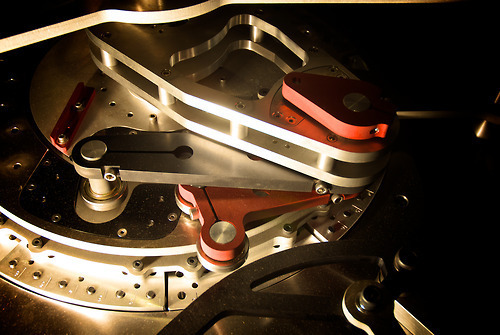
Geneva wheel prototype photo by Raphael Varieras
We recently launched a Long Now Tumblr blog where you will find even more about Long Now and related topics. If you’re unfamiliar with Tumblr, you don’t need to join the service to read the blog, just follow the link. But if you are on Tumblr, please follow and share the posts you enjoy.
Our Tumblr will complement what we publish on this blog. We’ll share a lot of Long Now images, information about our projects, fundamentals of what we do and why, and a look back at some highlights from our past.
Every Friday on Tumblr we will share audio from a past Seminar About Long-term Thinking. Our decade-old speaking series is building a compelling body of ideas about long-term thinking. It is curated and hosted by Stewart Brand, Long Now’s co-founder and Board President.

Philip Tetlock (screen shot from high-res Seminar video available to Long Now members)
This week we’ve chosen Philip Tetlock’s January 02007 talk from the archives. The research he shares in Why Foxes Are Better Forecasters Than Hedgehogs explores the confidence of forecasters, and it’s timely to revisit as we approach Daniel Kahneman‘s Seminar, just a few weeks away. We’ll tell you more about the relation between Tetlock and Kahneman’s work in our Seminar primer post next week.
The Tetlock Seminar begins with a mention of Long Bets, Long Now’s forum for competitive and meaningful long-term predictions. A good chance to remind you that Long Now will have a Long Bets table at the WorldFuture 2013 conference this weekend in Chicago. If you are there, look for us. Come by the table and make a Long Bet prediction for free.

July 16, 2013
Brian Eno Designing Sound and Light Installations for the Long Now Salon

Photo by Alexander Rose in July of 02013
Brian Eno recently visited the Bay Area and saw the latest progress on the 10,000 Year Clock project. Clock designer Danny Hillis gave Brian a tour of the progress at the Long Now Clock assembly space (where these photos were taken.)

Photo by Alexander Rose in July of 02013
Brian Eno confirmed on this visit that he is designing the ambient sound for the Long Now Salon as well as a dedicated light-painting installation for the space. We are thrilled that Brian will be creating these one-of-a-kind works for our new venue. The Salon is intended to be a comfortable place that inspires conversations, and Brian’s sound and lightscape designs will be a key element to creating that atmosphere.
After rising to fame in the British pop music scene of the early 1970′s with Roxy Music and a series of acclaimed solo albums, Brian Eno made his mark as a producer working with such artists as David Bowie, the Talking Heads, U2, Coldplay and many more. Along the way he coined the term “Ambient Music” and made the recordings that eventually defined the genre.
In recent years he has increasingly focused on generative sound and visual art. His 77 Million Paintings software creates a slow, constantly evolving series of light-paintings with an ever-changing ambient sound and lightscape. Brian has released this type of algorithmically-driven digital work both as mobile apps and projected to monumental scale on the sails of the Sydney Opera House (below).

“Luminous/Lighting the Sails” photo by Paul Benjamin
Brian was amongst the first people with whom Danny Hillis discussed his idea to design a clock that would run for 10,000 years. The Clock and the process of building it are intended as an inspiring example of long-term thinking. From Danny’s 01995 article in Wired, announcing “The Millennium Clock”:
When I tell my friends about the millennium clock, either they get it or they don’t. Most of them assume I’m not serious, or if I am, I must be having a midlife crisis. (That’s nice, Danny, but why can’t you just write a computer program to do the same thing? Or, Maybe you should start another company instead.) My friends who get it all have ideas that focus on a particular aspect of the clock. My engineering friends worry about the power source: solar, water, nuclear, geothermal, diffusion, or tidal? My entrepreneurial friends muse about how to make it financially self-sustaining. My writer friend, Stewart Brand, starts thinking about the organization that will take care of the clock. It’s a Rorschach test – of time. Peter Gabriel, the musician, thinks the clock should be alive, like a garden, counting the seasons with short-lived flowers, counting the years with sequoias and bristlecone pines. Artist Brian Eno felt it should have a name, so he gave it one: The Clock of the Long Now.
After giving the Clock its name, Brian joined the Board of Directors of Long Now when it was founded as a non-profit in 01996. He continues to serve on our board, and we thank him for his generosity in also creating art specifically for this new project.
This will be the first sound and light installation of its kind that Brian has created in America. The sooner we finish this project the sooner we can all enjoy Brian’s art in its new Bay Area home. We can’t wait, and we’d love for you to help us build it.

Oldest Record of Time-Keeping Found in Scotland
A team of archaeologists at the University of Birmingham may have found the earliest evidence of human time keeping activity. In a paper published earlier this week, the researchers announce that they have discovered a 10,000-year-old lunar calendar, etched in the earth near Aberdeen, on Scotland’s North Sea Coast.
When this ancient stone-age site was first discovered by an aerial archaeological expedition in 02004, scientists were baffled by a series of 12 pits, dug into the terrain along a neat 50-meter arc. But new analysis has now revealed that these holes in fact comprise a system that tracks and mimics the regular cycle of lunar phases.
There are 12.37 lunar cycles (lunar months) in a solar year – and the archaeologists believe that each pit represented a particular month, with the entire arc representing a year. The 12 pits may also have played a second role by representing the lunar month. Mirroring the phases of the moon, the waxing and waning of which takes 29 and half days, the succession of pits, arranged in a shallow arc (perhaps symbolizing the movement of the moon across the sky), starts small and shallow at one end, grows in diameter and depth towards the middle of the arc and then wanes in size at the other end (The Independent).
More impressive yet, these mesolithic timekeepers may even have been aware of a common logistical snag associated with lunar calendars: the fact that the monthly cycle of moon phases does not neatly align with the length of a solar year. The Birmingham archaeologists have found evidence to suggest that this landscape calendar included a way to mark the mid-winter solstice, allowing this community to re-calibrate their calendar with the annual progression of seasons.
This calendar is nearly 5,000 years older than the oldest time-keeping structures found in Mesopotamia, and pre-dates the first-known emergence of sedentary societies in Europe. But this evidence of time tracking suggests that these Scottish hunter-gatherers may in fact have formed a more stable and organized community than previously thought. As Vincent Gaffney, lead researcher on the project, explains,
“The significance about this is that hunter gatherers have taken the decision, or have the capacity or the need to actually have a formal approach to time itself. And in doing that, they’re not just thinking of the past, of what’s happened in the past, they’re anticipating the time to come, and they’re probably scheduling activities as a consequence of that. And that can lead to all sorts of social change. They’re probably, in our opinion, trying to use this, for instance, to anticipate the run of fish in the river Dee, it’s a very fertile source of food for them, but that in itself allows them to congregate, larger communities to gather together, and in fact their social networks and capacity changes in consequence. So all of these things cascade. And it’s a remarkably early period for this to happen. Normally we associate this sort of monument with the Neolithic, with sedentary farming communities rather than hunter-gatherers, certainly at this early stage.”
In other words, not only is the history of long-term thinking nearly 5,000 years longer than we had thought; one might even argue that long-term thinking is the very foundation of human civilization.

Daniel Kahneman Seminar Tickets
Seminars About Long-term Thinking
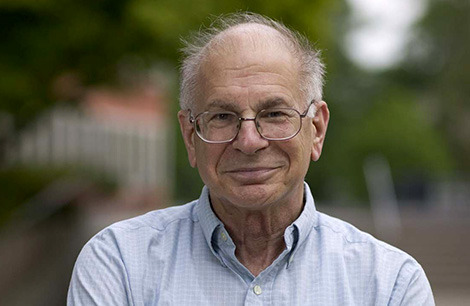
Daniel Kahneman on “Thinking Fast and Slow”
TICKETS
Tuesday August 13, 02013 at 7:30pm Marines’ Memorial Theatre
Long Now Members can reserve 2 seats, join today! General Tickets $15
About this Seminar:
Daniel Kahneman is the world’s most influential psychologist because he has, based on empirical research, figured out how we can notice when we are not thinking rationally. That knowledge gives us the choice to think “slow”—ignore brisk intuition and notional risks—when we decide we really need to get something right.
His book, Thinking, Fast and Slow, is an international best-seller in part because the reader (or listener of his lecture) is invited to make cognitive experiments while reading (or listening). You catch your mind in the act of opting for illusion. To engage Kahneman’s work is to experience a delightful carnival ride of one “Busted!” after another. Your own brain becomes a co-instructor in how to use it better.
Kahneman received the Nobel Prize in Economic Sciences in 2002 for his work (with Amos Tversky) in “prospect theory” that founded the new discipline of behavioral economics.

Stewart Brand's Blog
- Stewart Brand's profile
- 291 followers





